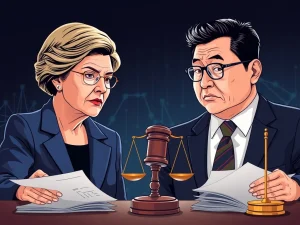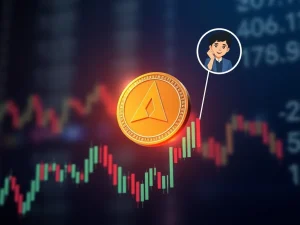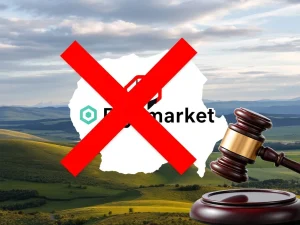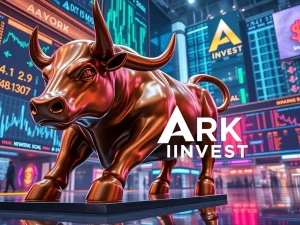XRP Futures: Essential Guide to Smart Trading
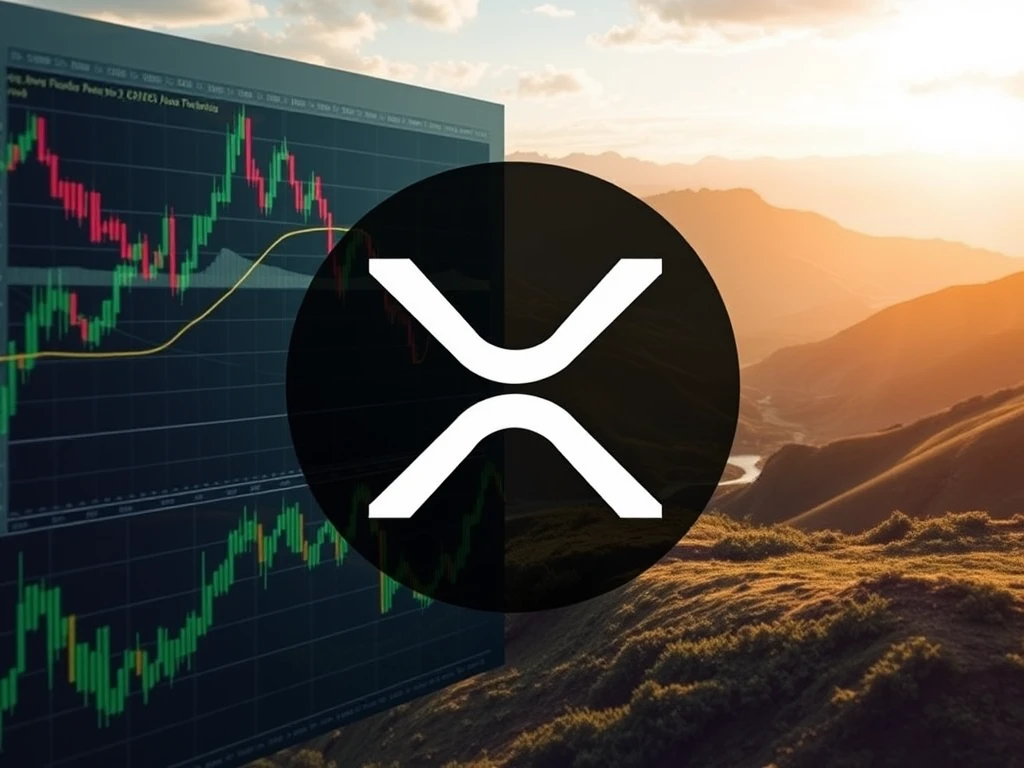
The world of crypto trading is constantly evolving, bringing new ways for investors to engage with digital assets. If you’ve been following market developments, you’ve likely heard about the introduction of XRP futures contracts on regulated exchanges like Coinbase Derivatives. This is part of a growing trend, offering alternative methods to participate in the price movements of cryptocurrencies like XRP without needing to own the underlying token. But what exactly are XRP futures, and how can you get started with XRP futures trading?
Understanding What Are XRP Futures
XRP futures are standardized financial agreements to buy or sell XRP at a specific price on a future date. Unlike buying XRP directly, you are trading a contract that tracks XRP’s price. These contracts operate within a regulated framework, often overseen by bodies like the US Commodity Futures Trading Commission (CFTC). This oversight provides a level of structure that appeals to many investors, particularly those concerned about unregulated platforms.
For instance, Coinbase Derivatives announced its filing with the CFTC to self-certify XRP futures contracts on April 3, 2025, launching them on April 21, 2025.
Exploring Types of XRP Derivatives
Coinbase’s offering includes different contract sizes to suit various traders:
- Nano XRP futures: Represent 500 XRP per contract, settled in US dollars. These are designed for retail traders and smaller institutions, offering lower capital requirements.
- Standard XRP futures: Cover 10,000 XRP per contract, also settled in USD. These target larger institutions and active traders.
This variety lets you choose a position size that matches your risk tolerance and strategy.
Both contract types are ‘cash-settled’. This means you trade based on the price of XRP, but you don’t own or receive actual XRP. When the contract expires or is closed, the profit or loss is calculated and settled in USD.
Did you know? Coinbase Derivatives Exchange also offers futures contracts on assets like Bitcoin (BTC), Ether (ETH), Dogecoin (DOGE), and Solana (SOL).
Why Trade XRP Futures Instead of Buying XRP?
Choosing futures over buying XRP on the spot market offers distinct advantages for certain trading strategies:
- Leverage: Futures allow control of a large position with less capital, potentially amplifying gains but also increasing potential losses.
- Hedging: If you hold XRP, futures can protect your portfolio against short-term price drops.
- Speculation: Futures enable both long (betting on price increase) and short (betting on price decrease) positions, allowing profit potential in any market direction.
- No Wallet Needs: Trading contracts on an exchange removes the need for a crypto wallet and managing private keys, reducing risks like hacking or loss.
- Liquidity and Accessibility: Futures markets often have high liquidity. Some platforms offer XRP derivatives trading with fewer barriers than buying spot XRP, especially in regions with regulatory restrictions.
- Cash Settlement: Settling profits or losses in fiat simplifies the process, avoiding direct XRP handling.
When to Choose Futures vs. Buying XRP
Deciding whether to trade XRP futures or buy XRP depends on your goals:
- Choose Futures If: You want to trade XRP price movements with leverage or the flexibility to go long or short. You prefer not to handle crypto custody. You are hedging an existing XRP position. You are comfortable with the risks of derivatives.
- Buy XRP If: You believe in XRP’s long-term value and plan to hold it. You intend to use XRP within its ecosystem. You want to avoid leverage risks and margin calls.
Futures suit active traders seeking leveraged exposure, while buying XRP is often better for long-term holders or users of the asset. Always assess your risk tolerance and goals before deciding.
Did you know? The MarketVector™ Coinbase XRP Benchmark Rate provides a specific USD price reference solely for XRP traded on Coinbase Exchange.
Where to Invest in XRP Futures
If you’re looking to invest in XRP futures, several platforms offer access, depending on your location:
- Coinbase Derivatives: Offers regulated Nano and Standard XRP futures in the US. Availability is restricted in certain regions like the UK or Spain for retail clients.
- Kraken Futures: Provides leveraged XRP futures. Access varies by region, often limited to professional or wholesale clients.
- Binance: Offers XRP/USDT perpetual futures contracts with leverage. While XRP is no longer a margin asset in Multi-Assets Mode, futures trading remains available.
- OKX: Supports XRP/USDT perpetual swaps for continuous speculation.
- Bitget: Offers XRP futures globally with long/short options, depending on regional regulations.
- KuCoin Futures: Provides XRP perpetual contracts (XRP/USDT) with leverage, known for low fees.
- MEXC: Lists XRP futures in USDt-margined and coin-margined formats with high leverage options.
- Delta Exchange: Offers XRP perpetual futures with leverage up to 100x, focusing on low fees and risk tools.
- Bitfinex: Includes XRP futures in its derivatives portfolio, catering to advanced users.
How to Invest in XRP Futures: A Step-by-Step Guide
Getting started with XRP futures trading involves several steps:
- Choose a Platform: Select a regulated exchange offering XRP futures. Complete identity verification.
- Understand the Product: Research contract sizes, margin requirements, leverage, and fees. Understand the risks, including liquidation.
- Fund Your Account: Deposit USD or another accepted currency as collateral (margin). Check minimum deposit and margin requirements.
- Place Your Trade: Use the platform’s interface to select XRP futures. Decide on long or short, set position size, and apply leverage if desired.
- Practice Risk Management: Futures carry high risks due to leverage and volatility. Set stop-loss orders, limit position sizes, and only risk funds you can afford to lose.
- Monitor the Market: Track XRP’s price, sentiment, funding rates, and external news. Use charts and indicators to inform your strategy.
Understanding the Risks of XRP Futures Trading
While offering opportunities, futures trading involves significant risks, especially for newcomers:
- Leverage Risk: Amplifies both gains and losses. A small adverse price move can lead to substantial losses.
- Volatility: XRP’s price can move sharply, and futures exaggerate the impact of this volatility on your position.
- Funding Rates: Perpetual futures have periodic funding fees that can erode profits if held long-term.
- Liquidation: If the market moves against you and your margin drops below a required level, your position may be automatically closed at a loss.
- Complexity: Futures are more complex than spot trading. Understanding contract terms, funding rates, and expiry is crucial.
- Market Liquidity: While XRP is generally liquid, thin order books in futures markets can cause slippage.
- Emotional Pressure: The fast pace can lead to impulsive decisions. Discipline is key.
If new to this, consider starting with a demo account or using nano contracts to reduce exposure while learning.
Regulatory Landscape: Oregon Targets Coinbase Over XRP
The regulatory environment for crypto derivatives is complex. For example, Oregon’s Attorney General sued Coinbase, alleging the exchange offered unregistered securities, including XRP. This case highlights ongoing debates about digital asset classification under state law. While this state-level action doesn’t set national precedent, it influences how regulators and courts approach similar cases. The timing of such actions, sometimes close to developments like new XRP futures listings or SEC settlements (like Ripple’s $50 million settlement with the SEC on March 25, 2025), underscores the dynamic regulatory landscape.
Conclusion: Is Trading XRP Futures Right for You?
XRP futures offer a powerful way to speculate on XRP price movements, hedge existing positions, and utilize leverage. They provide an alternative to direct token ownership, removing the need for crypto custody. However, the complexity, leverage, and volatility inherent in XRP derivatives trading mean they come with significant risks, including potential liquidation. Before you decide to invest in XRP futures, thoroughly research the product, understand the platform’s rules, and practice robust risk management. Futures trading is not suitable for everyone, and careful consideration of your financial situation and risk tolerance is essential. Trade smart—your safety’s on you!
This article does not contain investment advice or recommendations. Every investment and trading move involves risk, and readers should conduct their own research when making a decision.

